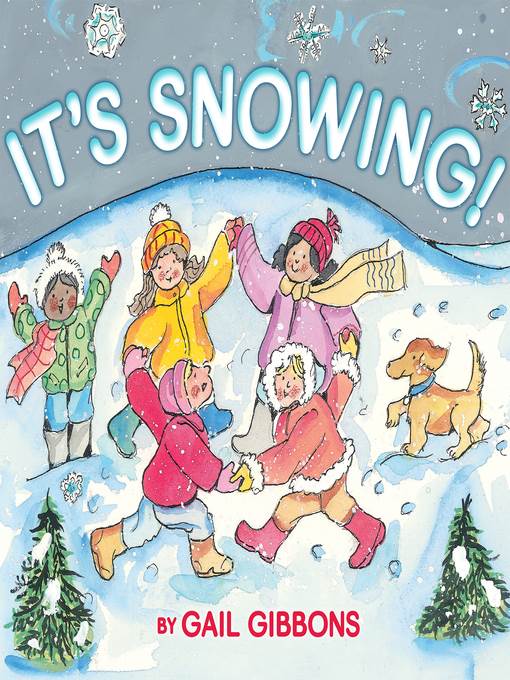
It's Snowing!
فرمت کتاب
ebook
تاریخ انتشار
2015
Lexile Score
790
Reading Level
2-4
ATOS
4.1
Interest Level
K-3(LG)
نویسنده
Gail Gibbonsناشر
Holiday Houseشابک
9780823434657
کتاب های مرتبط
- اطلاعات
- نقد و بررسی
- دیدگاه کاربران
نقد و بررسی

October 1, 2011
The prolific Gibbons' latest is a utilitarian, beginner's look at snow. Opening with explaining how ice crystals form and merge together within clouds to create snowflakes, the text then touches on the fact that snow falls on every continent (though least on Antarctica). Next, Gibbons examines the different ways snow can fall--flurries, sleet, snowstorm and blizzard--and how people can know when snow is headed their way: "A blizzard happens when lots and lots of snow falls. The wind is howling. The snow is drifting. There can be whiteouts." Briefly touching on snow clean up, outdoor activities and how snow benefits plants and wildlife, the text concludes with some ways to be prepared, a few Web resources and a list of fascinating facts, including some records--the largest snowflake (15 inches wide!) and biggest snowfall in one day (6'4"). There are also instructions for collecting and closely observing snowflakes, just as Wilson "Snowflake" Bentley did. Asides within the softly colored watercolor illustrations help define vocabulary: snowdrift, whiteout, evaporation, meteorologist. This, combined with short, simple sentences, make the book easily accessible for both young children and beginning readers. Though it lacks the flair and depth of others, the breadth and ease of the text make this a good introduction. (Informational picture book. 4-8)
(COPYRIGHT (2011) KIRKUS REVIEWS/NIELSEN BUSINESS MEDIA, INC. ALL RIGHTS RESERVED.)

November 1, 2011
PreS-Gr 3-Written in the style of Gibbons's Hurricanes! and Tornadoes! (both Holiday House, 2009), this book grabs the intended audience with stylized bright drawings and short blocks of text. It addresses what happens when it snows and covers cloud formation, ice crystals, and snowflakes; a simplified map illustrates worldwide snowfall regions. Ways in which snow falls to the ground, such as sleet, flurries, and a storm, are also discussed. Pictures show children playing, building snowmen, and making snow angels. There are tips about staying warm and preparing for a snowstorm, and a simple project on viewing a snowflake close up. Back matter mentions Wilson "Snowflake" Bentley, the first person believed to have taken a picture of a snowflake, and the Great Blizzard of 1888. Libraries will want this as a general purchase for weather units.-Melissa Smith, Royal Oak Public Library, MI
Copyright 2011 School Library Journal, LLC Used with permission.

September 15, 2011
Grades K-3 Snowstorms, snowflakes, snowmen, and everything you didn't know about snow is all here in 32 frolic-filled pages. In her typical illustrative style, Gibbons blankets the pages with information from crystallization to how to prepare for a storm. The device of painting the factual pages in blues and grays and contrasting them with full-color scenes of how weather impacts people is surprisingly effective. For example, the explanation of how snowflakes are formed is followed by a picture of a family bundled in winter clothing catching snowflakes. The factual stuff includes a map of where snow falls (on all seven continents), definitions of a winter storm watch and warning, and record snowfalls (6 feet 4 inches in one day in Silver Lake, CO, on April 14, 1921). Other tidbits are advice on how to stay warm outside and directions on how to see snowflakes close up. For families and classrooms, this is a crystal-clear introduction that illustrates how snow can be dangerous, but plenty of fun, too.(Reprinted with permission of Booklist, copyright 2011, American Library Association.)

























دیدگاه کاربران